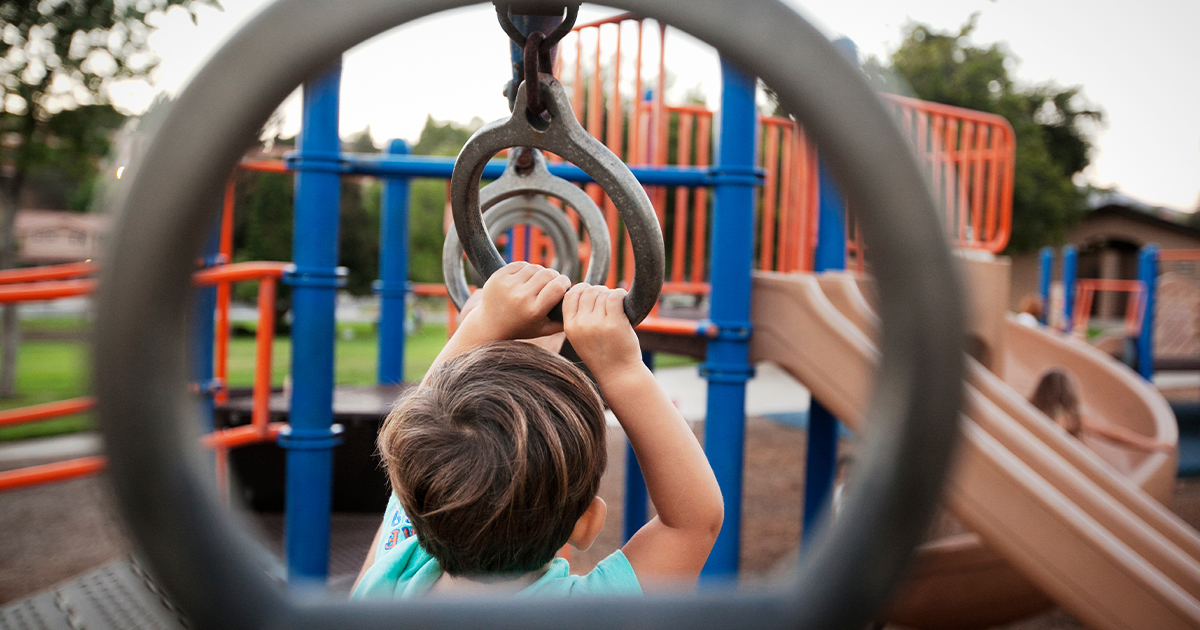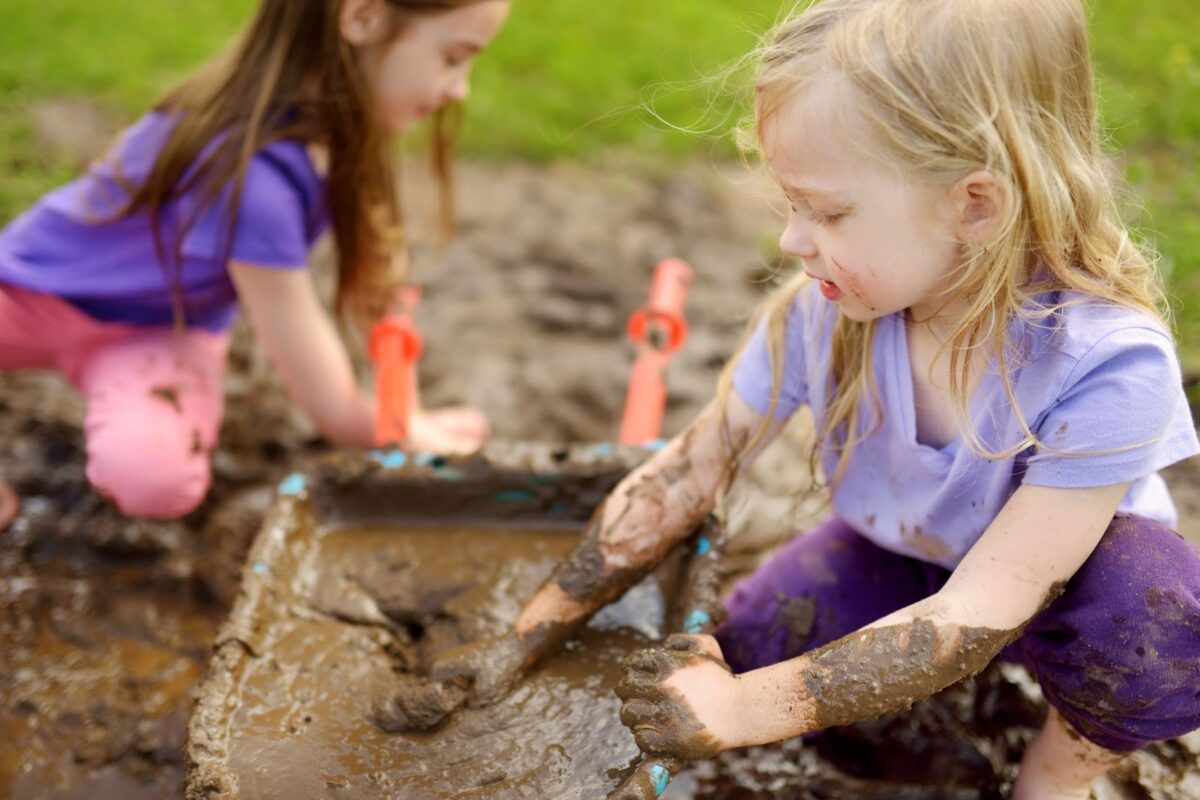Risky Play: Why Taking Chances Helps Children Grow

By now, most parents are aware of the benefits of play on a child’s development, particularly outdoor play. A specific element of outdoor play that is making a comeback is risky play, or play that involves an element of risk because it uses real-world elements instead of manufactured equipment or adult-facilitated instructions. What does risky play look like, and what are the benefits of risky play? Let’s take a closer look.
What is Risky Play?
It can be hard to qualify what exactly makes up risky play, but a study conducted in Norway identified eight elements that contribute to the right environment:
- Great heights
- High speed
- Using harmful tools
- Being near dangerous elements
- Rough-and-tumble play
- Opportunity for children to “disappear” or “get lost”
An article in CityLab highlights adventure playgrounds, spaces that “look like scrap yards, with loose tires, blocks of wood, rope, and tools like hammers and nails, where children are free to build and destroy their surroundings as they choose. They can even set fires.” These are contrasted with playgrounds that have “become mind-numbingly standard-issue—with the same type of plastic swing sets and slides—designed to minimize harm, rather than maximize enjoyment.”
Risky play is not equal to dangerous play. Children are prepared by adults before being sent out into risky environments, and are often supervised while they assess the risks offered to them.

The Benefits of Risky Play
First, let’s remind ourselves of how important playing is for children. The American Academy of Pediatrics released a report entitled “The Power of Play: A Pediatric Role in Enhancing Development in Young Children.” It states: “Play is not frivolous: it enhances brain structure and function and promotes executive function (i.e., the process of learning, rather than the content), which allow us to pursue goals and ignore distractions.”
In addition, the Academy warns that without play, “toxic stress can disrupt the development of executive function and the learning of prosocial behavior.” On the other hand, play can help kids regulate their stress:
Play, especially when accompanied by nurturing caregiving, may indirectly affect brain functioning by modulating or buffering adversity and by reducing toxic stress to levels that are more compatible with coping and resilience.
Given how important play is, risky play offers even more advantages, such as:
- Fostering creativity, independence, and problem-solving
- Building self-confidence and resilience
- Making kids more aware of their environment
- Teaching risk management and executive function skills that can be applied to other situations
Children are given the freedom to test themselves in order to find their limits and boundaries. They can then grow their comfort zone and skills by extending their limits bit by bit. Everyone’s comfort level and capabilities are different, so what constitutes risky play is unique to each child.
But, they need that freedom first to determine these things on their own. Having adults watching too intently and providing warnings can cause a rise of anxiety in today’s kids, whose heavily structured and monitored lives don’t allow them opportunities to fail, to get injured, to make mistakes, and to develop grit. We’ve lost sight of the positive outcomes of risk, and now tend to assign only negative connotations to the word. So how can we safely teach them about risk without being overbearing?
How to Teach Your Children About Risk
Ethan Demme, CEO of Demme Learning, talked about this on the BookShark podcast Homeschool Your Way, in an episode titled “Building Trust Through Family Adventures.” As Ethan put it, “One of the big things that we have to teach kids is how to identify what’s safe and what’s unsafe. And then the difference between that is risk.”
Part of making that distinction is by creating positive internal messaging. Most people default to negative warnings when out with their children, such as “be careful!” or “don’t fall!” Rather than help kids stay safe, these phrases inhibit exploration and create a sense of fear. Instead, you can use phrases that enhance awareness, such as “do you see…” or “notice how…” Or, you can ask questions that help kids problem-solve, such as “what can you do if…” or “how will you…” This change in mindset might seem small, but it has a big impact on the way kids see the world.
Ethan walked through a scenario of how to discuss risk with your kids while adventuring outdoors:
“If … they stand up and they start walking across a fallen down tree, it’s “do you think that’s safe?” Being on the ground is safe, walking on a fallen tree—it’s safe for me, but it might not be safe for you. So then we say, well what could happen? What’s the worst that can happen? Well, you could fall. Where could you fall? If you fall on the ground, you’re fine. If you fall on a stick, you might hurt your arm. If you fall on a pointy stick, you might start bleeding. What if the tree’s hanging over a ravine and it’s like ten feet down? Well now you could fall and you could sprain your ankle, you might break your bone. You’re not going to die. … So you start to shift that decision-making to them and you teach them to make that decision. …Once they know what safe is, we start with only do what you feel is safe.”
Kids have a natural inclination to explore, push boundaries, and try new things. Through societal conditioning and parental fear, that urge has been stifled in the attempt to keep kids safe from any harm, regardless of how small. By engaging in risky play, children can reclaim their innate sense of personal boundaries and build skills that will serve them well throughout life.